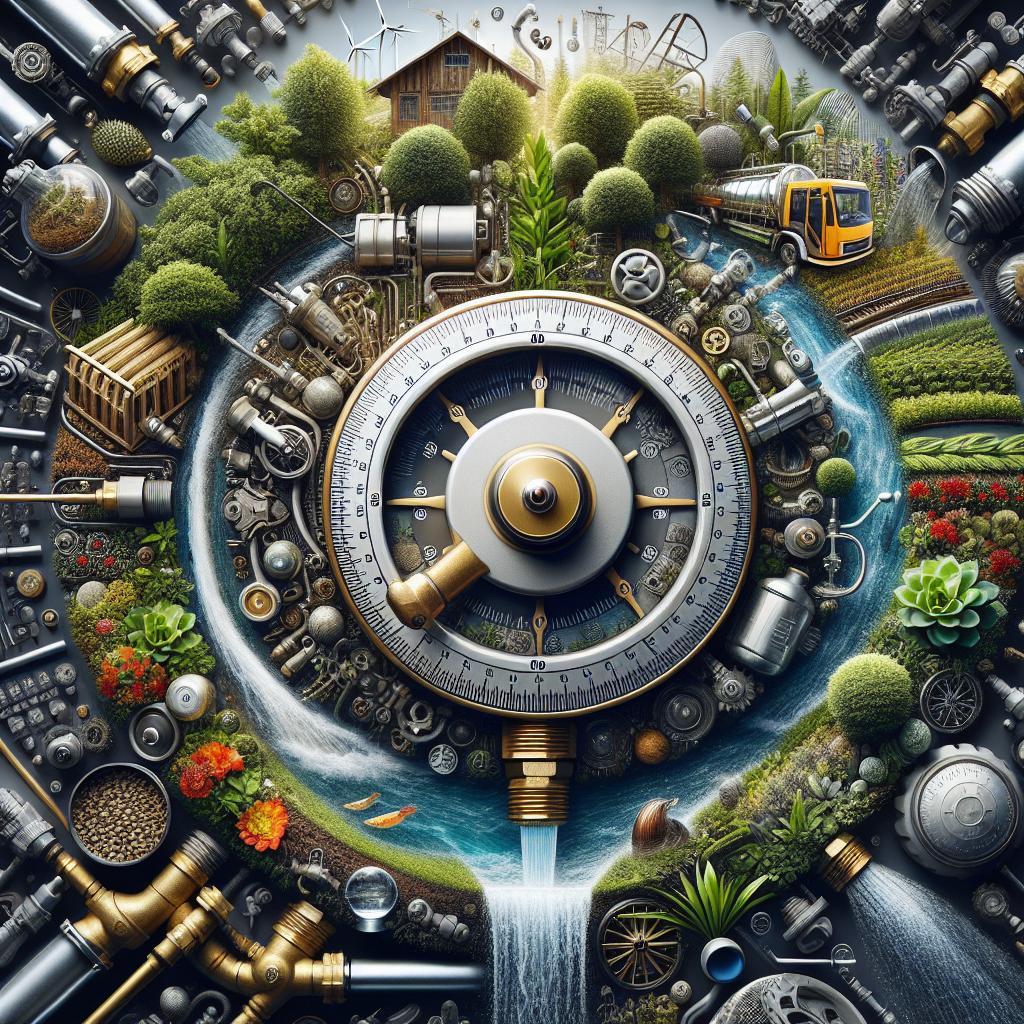This post may contain affiliate links which means I may receive a commission for purchases made through links. Learn more on my Private Policy page.
Maximizing Efficiency: Tips for Regulating Water Pressure in Your Irrigation System
If you’ve ever watched a garden flourish under the golden sun, you know that the key to vibrant greens and blossoming blooms often lies beneath the surface—specifically, the rhythm of water that courses through the soil. But did you know that the secret to a thriving irrigation system might just be in the balance of water pressure? Just like a well-conducted orchestra, finding the right pressure can lead to a harmonious flow of resources that supports plant health while conserving water. In this article, we’re diving into the art of regulating water pressure in your irrigation system, sharing friendly tips and creative solutions to help you maximize efficiency. Whether you’re a seasoned gardener or a budding plant enthusiast, let’s embark on this journey together, ensuring your garden not only survives but thrives! So, grab your watering can, and let’s get started!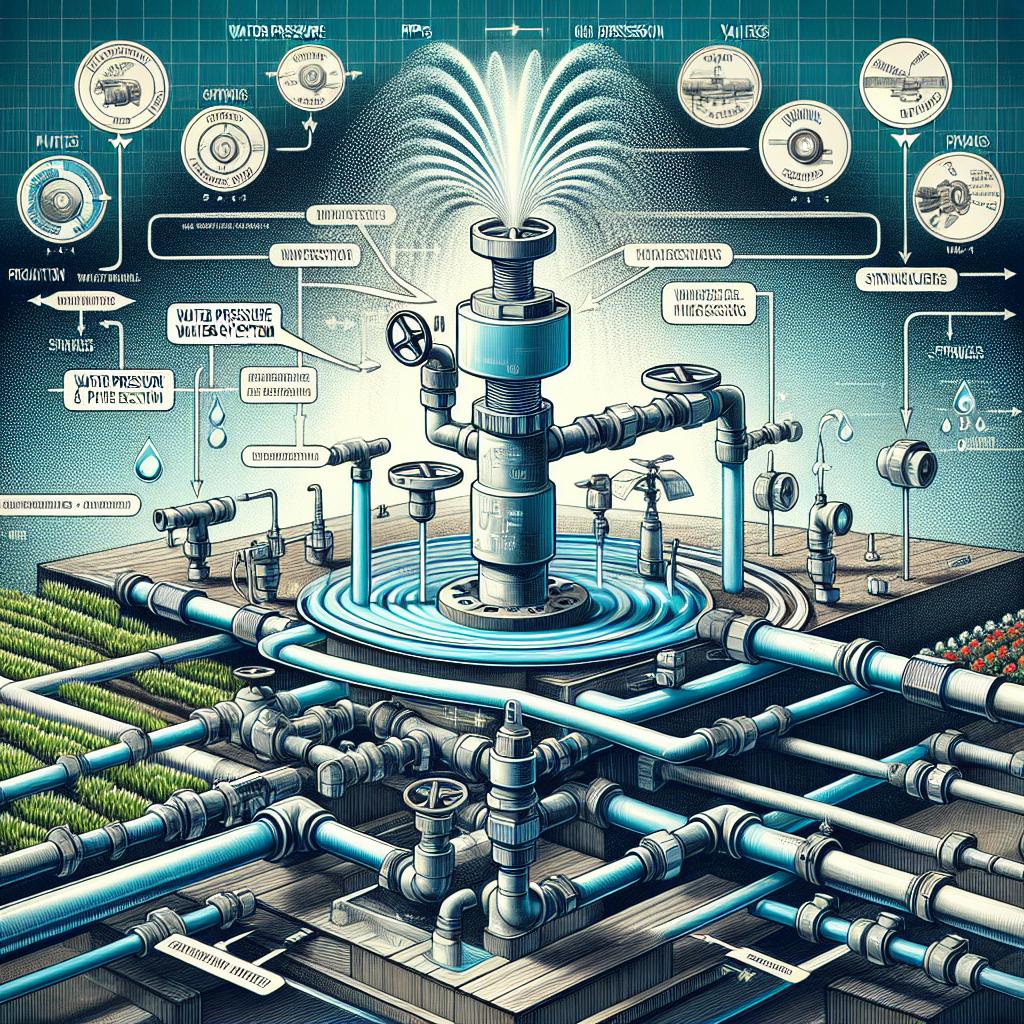
Understanding the Basics of Water Pressure and Irrigation Systems
Water pressure is a crucial aspect of any irrigation system, significantly affecting how well plants receive moisture and nutrients. Properly managing water pressure not only ensures consistent watering but also helps prevent over or under-watering, which can lead to plant stress. Understanding the factors that influence water pressure, such as elevation, pipe diameter, and flow rate, can empower you to make informed decisions about your irrigation setup. Here are some key components to consider:
- Elevation Changes: The higher the water source, the more pressure it can exert. Adjusting the layout of your system can help mitigate unnecessary pressure loss.
- Pipe Diameter: Larger pipes allow for better flow and less friction. Evaluating the diameter based on your system’s needs can impact efficiency significantly.
- Flow Rate: Monitoring the flow rate is essential as it determines how quickly water can be delivered to your plants.
Moreover, choosing the right components for your irrigation system can dramatically enhance water pressure management. For instance, using pressure regulators and flow meters allows you to monitor and adjust water flow accurately. Below is a simple table that highlights different tools and their functions:
| Tool | Function |
|---|---|
| Pressure Regulator | Controls water pressure to appropriate levels. |
| Flow Meter | Measures the amount of water passing through the system. |
| Filter | Removes debris to prevents clogging in drip systems. |
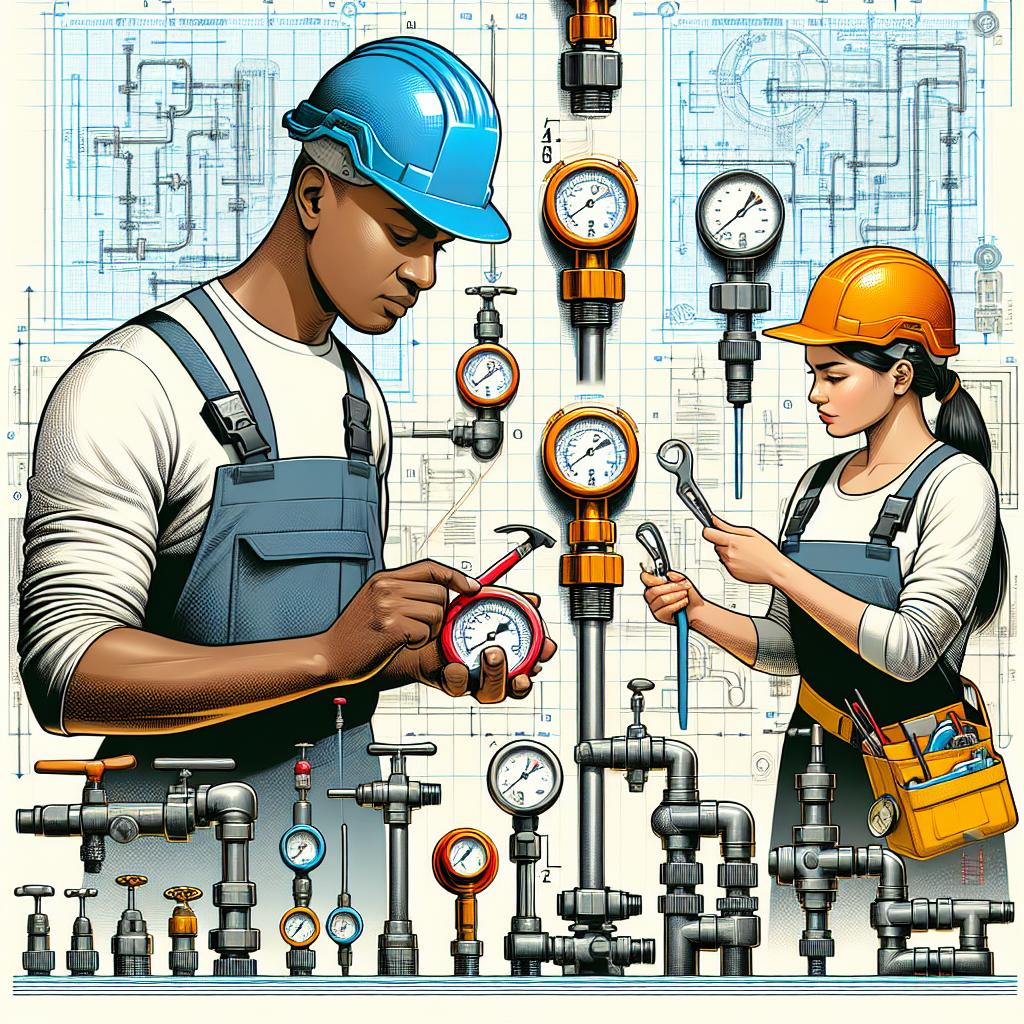
Smart Strategies for Measuring and Adjusting Water Pressure
To effectively manage your irrigation system’s water pressure, it’s crucial to begin with regular monitoring. Utilizing a pressure gauge can provide real-time data on your system’s pressure levels. This simple tool allows you to detect fluctuations that may indicate underlying issues. Among the strategies to enhance your monitoring efforts, consider these methods:
- Install pressure regulators for consistent flow and pressure.
- Conduct periodic system checks, focusing on pressure drop zones.
- Incorporate smart irrigation technology for automated adjustments.
Once you’ve gathered data on your water pressure, the next step is to adjust accordingly. This could involve recalibrating your system or making physical changes to the infrastructure. Use the following strategies to optimize your water pressure:
| Adjustment Method | Benefits |
|---|---|
| Adjusting valve settings | Improves flow rate and reduces waste. |
| Using variable frequency drives | Increases energy efficiency. |
| Regular maintenance of pumps | Ensures optimal performance and longevity. |
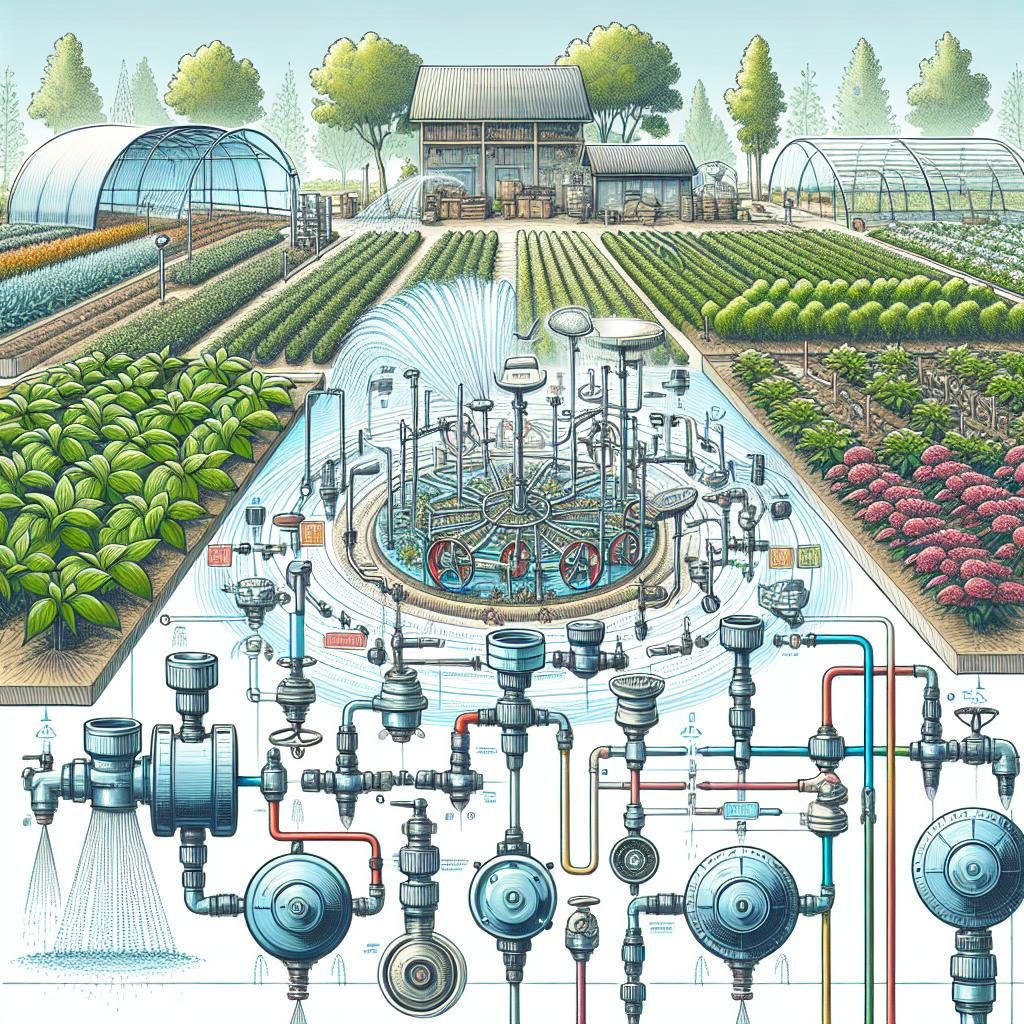
Choosing the Right Components for Optimal Irrigation Efficiency
When it comes to designing your irrigation system, selecting the right components plays a crucial role in achieving maximum efficiency. Different types of irrigation heads and pipes can dramatically affect water distribution and pressure levels. Consider the following components:
- Pressure Regulators: These devices ensure that water flows at a consistent pressure, protecting other components from damage and maintaining even distribution.
- Drip Emitters: Choosing an appropriate emitter will optimize water delivery right at the plant’s root zone, minimizing wastage.
- Filtration Systems: High-quality filters help prevent clogging, maintaining efficiency throughout the system.
In addition, utilizing the right lengths and diameters of pipes can affect flow rate and pressure. A properly sized pipe reduces friction loss, which enhances system performance. Here’s a simple comparison of common pipe sizes and their impact:
| Pipe Size | Flow Rate (GPM) | Pressure Loss (psi/100 ft) |
|---|---|---|
| 1 inch | 30 | 4.0 |
| 1.5 inches | 75 | 1.5 |
| 2 inches | 120 | 0.8 |
By carefully selecting each component and considering their interactions, you can create an irrigation system that not only conserves water but also thrives in maintaining your landscape’s health.
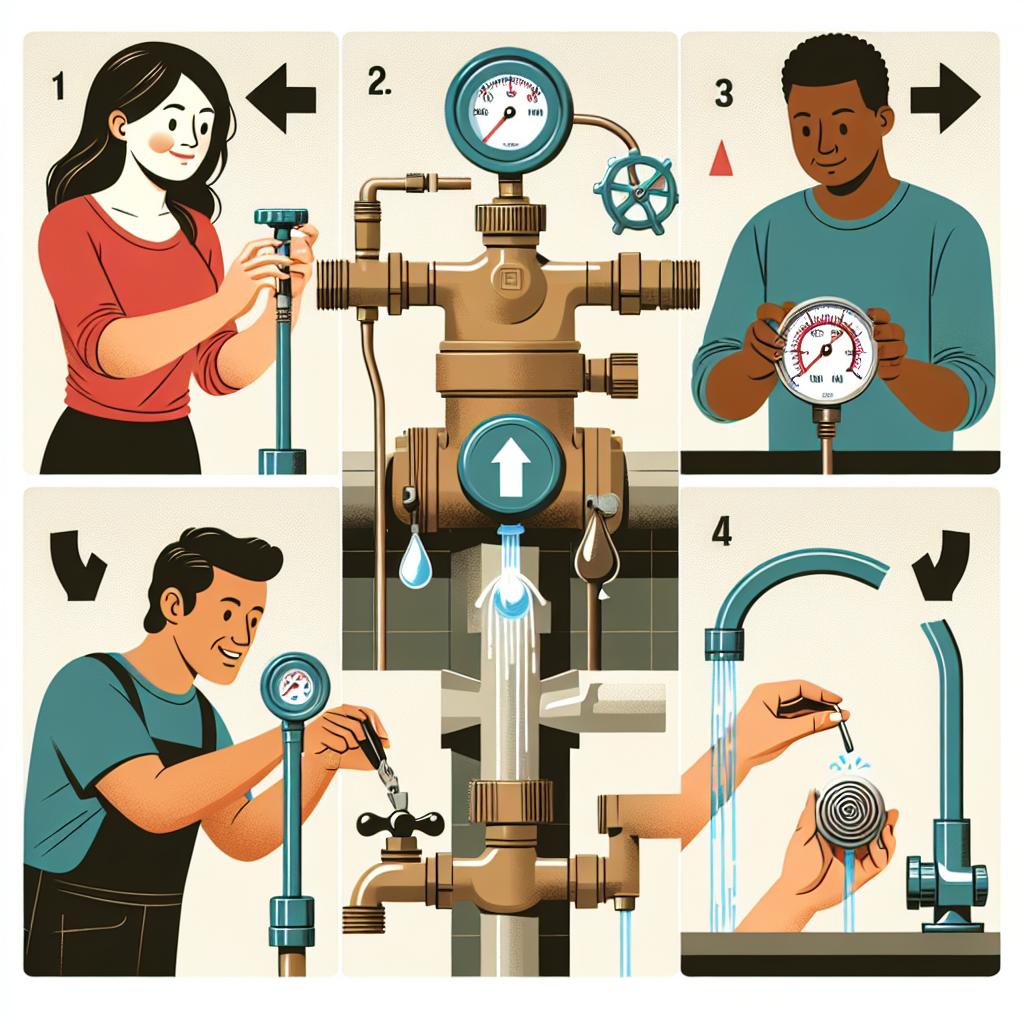
Maintenance Tips to Keep Your Water Pressure in Check
Keeping your water pressure at optimal levels is essential for ensuring your irrigation system operates efficiently. Regular checks on your system can prevent fluctuations that lead to under or over-watering. Begin with inspecting your pressure regulator, as these devices control water flow to your system. If you notice that the pressure is consistently low or high, consider adjusting or even replacing the regulator. Additionally, monitor for any leaks or blockages in the pipes, as clogs can significantly affect water pressure. A simple inspection can save you significant time and money down the line.
Another key factor in maintaining water pressure is ensuring that your irrigation components are in good condition. Filters should be cleaned regularly to prevent debris from obstructing water flow. Schedule seasonal checks on your hoses, emitters, and valves to ensure they are functioning properly. If you notice any components are worn or damaged, replacing them promptly can help maintain the desired water pressure. Remember, a balanced system is not only efficient but also contributes to healthier, more vibrant landscapes!
Final Thoughts
As we wrap up our journey through the world of irrigation systems, remember that mastering water pressure isn’t just about efficiency—it’s about nurturing a thriving garden that flourishes under your thoughtful care. Armed with these tips, you can transform a daunting task into a delightful routine. By regulating your water pressure, you not only conserve precious resources but also ensure your plants receive just the right amount of hydration to thrive.
So, whether you’re cultivating a lush vegetable garden, a vibrant flowerbed, or simply maintaining a green lawn, apply these insights to watch your garden flourish. And don’t forget: a well-tuned irrigation system is the secret ingredient to a lush oasis! Let your plants sip at their own pace, and soon enough, you’ll be reaping the rewards of your effort—from bountiful harvests to stunning blooms.
Happy gardening, and cheers to a greener, more efficient tomorrow! 🌱💦
This post may contain affiliate links which means I may receive a commission for purchases made through links. Learn more on my Private Policy page.

